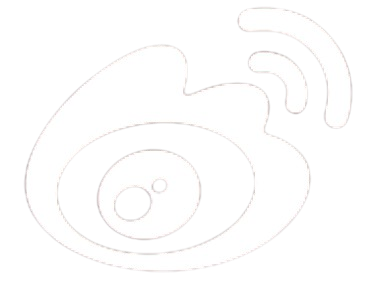
Research on Junior High School Music Layered Teaching Design Based on Multiple Intelligences Theory
摘要
This study focuses on the application of multiple intelligences theory in junior high school music hierarchical teaching, and systematically explores its design feasibility and practical path. By deconstructing the core essence of multiple intelligences theory, combining the theoretical foundation of hierarchical teaching and the unique attributes of junior high school music, an adaptive theoretical model of hierarchical teaching is constructed. In this paper, the division criteria of hierarchical dimensions, the hierarchical design of teaching objectives and the dynamic adaptation mechanism of teaching strategies are deeply explained, and the teacher ability system and teaching resource development principles that support the implementation of the model are further discussed. At the same time, the challenges and optimization directions in the implementation process are reflected. The research shows that this hierarchical teaching mode integrating the theory of multiple intelligences can significantly improve students' participation and effectiveness in music learning, and provide a theoretical reference and practical paradigm for the personalized reform of junior high school music teaching.1 Theoretical basis and core concepts
The theory of multiple intelligences put forward by American psychologist Howard Gardner breaks through the limitation of traditional intelligence monism, and divides human intelligence into eight independent and synergistic dimensions: language intelligence, mathematical logic intelligence, spatial intelligence, musical intelligence, interpersonal intelligence, physical movement intelligence, self-cognitive intelligence and natural cognitive intelligence. The core value of this theory lies in emphasizing the diversity and individual differences of intelligence-each individual exists in the form of a unique combination of intelligence, and the level of intelligence is not fixed, and sustainable development can be achieved through appropriate educational guidance. This theory provides important enlightenment for music teaching: music learning should not only be evaluated by a single level of music skills, but also pay attention to the advantages of multiple intelligences displayed by students in the process of music perception, performance and creation.
As independent individuals, students often have significant individual differences, including intelligence, interest, study habits and so on. Hierarchical teaching can not only face up to these differences, but also provide students with a teaching environment and conditions more suitable for their development[1].
According to Vygotsky, the nearest development zone refers to "the gap between a child's actual development level, which is determined by a child's ability to solve problems independently, and the latter refers to the child's ability to solve problems under the guidance of an adult or in cooperation with a stronger peer." Hierarchical teaching can provide students with learning tasks that are in line with their development and promote their personal development according to their nearest development zone[2].
Bloom pointed out: "Except for 5% of the students who are extraordinary and low-ordinary students, there is no difference in learning ability, learning speed and motivation for further learning among the remaining 95% students. … As long as appropriate previous and realistic conditions are provided, almost all people can learn what one can learn in the world." Hierarchical teaching can provide students with personalized learning paths, help them master the knowledge learned in school and achieve their learning goals.
Music takes aesthetics as the core, which can cultivate students' aesthetic taste and music appreciation ability; At the same time, the music discipline is also highly practical. Students need to master music knowledge and skills through practical activities such as singing and playing, so as to effectively improve students' musical expression and creativity. Based on the close relationship between music and other disciplines such as history, literature, dance, etc., students can learn about music styles and historical backgrounds in different cultural backgrounds by studying music, broaden their knowledge and improve their comprehensive quality; At the same time, music has a strong function of emotional expression. By learning music, students can express and communicate their emotions more clearly, and enhance their emotional experience and expression ability.
2 Second, analysis of the correlation between multiple intelligences theory and junior high school music teaching
Junior high school students' musical intelligence is mainly composed of musical perception ability, expression ability and creativity, and its development also has certain regularity. With the increase of age, students' musical perception ability will gradually improve, and their understanding of musical elements will be deeper. At the same time, students' musical expression ability is gradually enhanced, and they can express the emotion and style of musical works more accurately. In addition, students' music creativity began to sprout in junior high school, and they were gradually able to use their music knowledge to create music[3].
Students have unique personalities, and each student's learning style is essentially the embodiment of his unique personality. In fact, all effective learning methods are individualized, and there is no unified way that is effective everywhere. It is an effective way for one student, but not necessarily for others. Modern learning styles respect students'differences. Among them, students' intelligence differences have an important impact on music learning. Students with musical intelligence advantages show higher sensitivity and understanding in music learning, and can master music knowledge and skills faster; Students with musical intelligence disadvantages need more time and effort to overcome learning barriers[4].
Hierarchical teaching can provide different teaching objectives, contents and methods for students at different levels according to their musical intelligence and learning needs. This helps to meet the individual learning needs of students and improve the relevance and effectiveness of music instruction. At the same time, hierarchical teaching can also stimulate students' learning interest and enthusiasm, and promote students' all-round development in the field of music[5].
3 Third, the theoretical modconstruction of hierarchical instructional design
In the hierarchical teaching of junior high school music based on the theory of multiple intelligences, the division of hierarchical dimensions is the key. Combined with the composition and development law of junior high school students' music intelligence, it can be divided into three levels.
Level of music perception ability: The first level students have strong music perception ability and can accurately identify and understand music elements; Second-level students have certain music perception ability, but they need in-depth study under the guidance of teachers; The third level students' music perception ability is weak, which needs more attention and guidance from teachers.
Level of musical expression ability: The first level students have strong musical expression and creativity, and can accurately express the emotion and style of musical works; Second-level students have certain musical expression, but they need to be promoted under the guidance of teachers; Third-level students' musical expression is weak, so teachers need more practical opportunities and guidance.
Level of musical creativity: The first level students have strong musical creativity and imagination, and can create musical works independently; Second-level students have certain imitation ability, but they need to practice creativity under the guidance of teachers; The third-level students' music creative ability is weak, so they need teachers to give more creative guidance and inspiration.
In terms of music perception ability, the teaching goal of high-level students should focus on cultivating their in-depth understanding and analysis ability of music elements and improving their music appreciation level; The teaching goal of middle-level students should focus on strengthening their perception and understanding of music elements and improving their music perception ability; The teaching goal of low-level students should focus on stimulating their interest and curiosity in music and cultivating their basic music perception ability.
In terms of musical expression ability, the teaching goal of high-level students should focus on cultivating their musical expression and creativity, and improving their singing and playing skills. The teaching goal of middle-level students should pay attention to strengthening the training and promotion of their musical expression and improving the accuracy of singing and playing; The teaching goal of low-level students should focus on cultivating their basic singing and playing skills and stimulating their desire for musical expression.
In terms of musical creativity, the teaching goal of high-level students should focus on cultivating their musical creativity and imagination, and encouraging them to create independently. The teaching goal of middle-level students should focus on strengthening the cultivation and promotion of their imitation ability and guiding them to carry out creative practice; The teaching goal of low-level students should focus on stimulating their creative interest and imagination and cultivating their basic creative ability.
In order to achieve the goal of hierarchical teaching, it is necessary to adopt corresponding teaching strategies. First of all, in the teaching content, it can provide more challenging music works and analysis for high-level students; Provide moderate musical compositions and analysis for middle-level students; Provides easy-to-understand musical compositions and basics for lower-level students. Secondly, according to students' intelligent combination and learning style, personalized learning methods are provided. At the same time, the communication and cooperation among students at different levels can be promoted through group cooperative learning. High-level students can serve as group leaders or instructors to help middle and low-level students improve their music learning level, and students at different levels can interact with each other to broaden their music horizons and learning experience. In addition, for students who have made remarkable progress, their level and teaching objectives can be appropriately improved; For students with learning difficulties, the level and teaching objectives can be lowered, and more attention and counseling can be given.
4 Supporting system and challenges of theoretical model
The hierarchical teaching of music in junior middle schools based on the theory of multiple intelligences puts forward higher requirements for teachers' ability. Teachers should deeply understand the core connotation of multiple intelligences theory and the basic principles of hierarchical teaching, and apply them to the design and practice of music teaching. In teaching, teachers should provide students with accurate and vivid music demonstration and guidance, and improve their music professional knowledge and skills. Teachers should understand the characteristics of junior high school students' psychological development and the principles of educational psychology, pay attention to students' psychological needs, and provide psychological counseling for students. Finally, teachers should have innovative consciousness and ability, constantly explore new teaching methods, and improve the pertinence and effectiveness of music teaching.
When implementing the hierarchical teaching of music in junior high schools based on the theory of multiple intelligences, the development and utilization of resources are very important.
Principle of Diversity: Resources should cover different types of musical compositions, instructional materials, and tools to meet the learning needs of students at different levels. This includes musical compositions of different styles, periods and regions, as well as a diverse range of teaching aids.
Adaptability Principle: Resources should be adaptively designed according to students'level of musical intelligence and learning style. For example, more challenging musical compositions and analytical materials are provided for higher-level students, and easy-to-understand musical compositions and basic exercises are provided for lower-level students.
Principle of interaction: Resources should be interactive and can stimulate students' interest and participation in learning. This includes online music libraries, interactive instructional software, and more, enabling students to actively participate in music learning and creation.
Sustainability Principles: The development of resources should focus on sustainability and renewability. Teachers should constantly update and optimize teaching resources to meet the needs of student development and the latest trends in music education.
There may be some challenges and reflections in implementing layered instruction. For example: How to scientifically and reasonably determine the stratification standard? How to ensure that all students can achieve their learning goals? How has the role of teachers changed from traditional knowledge imparters to supporters and facilitators of student learning? In view of the above challenges and reflections, teachers can take the following measures to deal with them:
First of all, teachers should pay more attention to and understand students' individual differences. They can understand students' musical intelligence level and learning needs through questionnaires and individual interviews, so as to more accurately determine stratification standards and formulate teaching objectives. Secondly, we should pay attention to the flexibility and diversity of teaching strategies, and flexibly use a variety of teaching strategies and methods according to the learning characteristics and needs of students at different levels, such as differentiated teaching and group cooperative learning, so as to improve the pertinence and effectiveness of teaching. At the same time, teachers' own professional quality and educational psychology literacy should be continuously improved. Teachers can continuously improve their professional quality and educational psychology literacy by participating in training and reading related books, so as to better meet the needs of hierarchical teaching.
Conclusion and Prospect
Hierarchical teaching based on the theory of multiple intelligences can effectively improve students' interest and effectiveness in music learning. By paying attention to students' individual differences and musical intelligence level, we can formulate personalized teaching objectives and strategies to meet the learning needs of students at different levels. However, in the implementation, there are also some challenges and reflections, which need further research and discussion.
Looking forward to the future, the hierarchical teaching of music in junior middle schools based on the theory of multiple intelligences has a broad development prospect. With the continuous renewal of educational concepts and the continuous progress of educational technology, through continuous exploration and practice of hierarchical teaching based on the theory of multiple intelligences, we can provide junior high school students with a more personalized and diversified music learning experience and promote their all-round development in the field of music.
References
[1]Lu Liang, Li Jinghua. Music education and teaching from the perspective of multiple intelligences [J]. Music Time and Space, 2015, (18): 155.
[2]Bai Shusen. Research on teaching reform of higher vocational education based on multiple intelligences theory [J]. Journal of Zhangjiakou Vocational and Technical College, 2015, 28 (01): 42 44.
[3]Vygotsky L.S. Thinking and speech. In Rieber R W, The Collected Works of L.S. Vygotsky [M]. Newyork and London: Plenum Press, 1987, Vol.1, 375-383.
[4]Translated by Wang Gang et al.: Essays on Bloom's Mastery of Learning [M]. Fujian Education Press, 1996 edition, p. 43.
[5]Zhu Muju, editor-in-chief. "Entering the New Curriculum: Dialogue with Curriculum Implementers" [M] Beijing Normal University Press, 2002.33-66
如何引用
参考
Lu Liang, Li Jinghua. Music education and teaching from the perspective of multiple intelligences [J]. Music Time and Space, 2015, (18): 155.
Bai Shusen. Research on teaching reform of higher vocational education based on multiple intelligences theory [J]. Journal of Zhangjiakou Vocational and Technical College, 2015, 28 (01): 42 44.
Vygotsky L.S. Thinking and speech. In Rieber R W, The Collected Works of L.S. Vygotsky [M]. Newyork and London: Plenum Press, 1987, Vol.1, 375-383.
Translated by Wang Gang et al.: Essays on Bloom's Mastery of Learning [M]. Fujian Education Press, 1996 edition, p. 43.
Zhu Muju, editor-in-chief. "Entering the New Curriculum: Dialogue with Curriculum Implementers" [M] Beijing Normal University Press, 2002.33-66
版权
未提供许可协议









